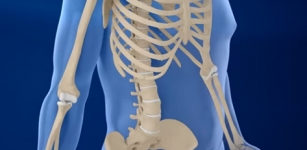Head Injury

A head injury is the result of a bump or blow to the head. Head injuries are common in children. Most children have a minor injury and sometimes a stay in hospital is needed for assessment and observation.Very few children need treatment. This leaflet explains what will happen while the child is in hospital.
The injury
The skull protects the brain. This, like any other bone, can break. The brain can bruise, swell and bleed, just like any other part of the body. As the skull cannot stretch, this bruising, swelling or bleeding may cause an increase in pressure inside the head and the brain may be squeezed. This can make the child very unwell.
The test that may be done
- X-ray: this will show any breaks in the skull bone.
- CT scan: This is a scan that looks inside the head for swelling, bruising and bleeding.
Assessment and observation in the hospital
The nurse will regularly check child’s condition. This will include looking for:
- Level of consciousness: how drowsy the child is and is the child behaving normally
- Pulse and breathing rate
- Blood pressure
- Reaction to light in the eyes
- Co – ordination and movement of arms and legs
The symptoms of a rise in pressure in the head can develop over several hours. The nurse must check the child often to look for changes even if it means waking them up. After an injury it is normal for children to have a headache and feel sick
Treatment
The child will be given pain reliever if needed. The sickness usually settles without treatment. Not havinganything to eat or drink for a few hours will help improving this. Very few children need additional treatment. If the child has a large swelling or a bleed, the doctor will discuss this with parents and will decide if treatment is need.
Going home
Most children coming to hospital with head injury will be seen by the doctor who then decides whether it is safe to send the child home or admit for observation
The child will be sent home if:
- Doctor after examination feels that child is normal with no serious injury
- Has not become increasingly sleepy and the observations have been stable
- Is not sick and has had something to eat
- Is able to carry out normal activities without feeling unwell
Advice when the child is discharged
It is normal for the child to have a headache. Give Paracetamol following the instructions on the packet or as recommended by doctor. The child should not go to school or nursery or take part in energetic activities and rest for two or three days.
If the child has any of the following symptoms, please contact your doctor or take them to nearest ER department:
- Headache getting worse
- Vomits more than three times or sudden
- Becomes increasingly tired and sleepy, difficult to wake from sleep
- Complains of dizziness
- Complains of blurred or double vision
- Become unusually clumsy or start saying or doing unusual things
- Make unusual movements, fit, twitches or seems to have “absent episodes”



